Characteristics of electrical insulating materials
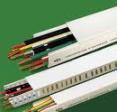 Electrical insulating materials are materials with which wires are insulated. They have: high resistance, electrical strength — the ability of the material to resist breakdown through its electrical voltage and electrical losses, characterized by the tangent of the loss angle, heat resistance, characterized by the temperature that is maximally permissible for a given dielectric during its long-term use in electrical equipment.
Electrical insulating materials are materials with which wires are insulated. They have: high resistance, electrical strength — the ability of the material to resist breakdown through its electrical voltage and electrical losses, characterized by the tangent of the loss angle, heat resistance, characterized by the temperature that is maximally permissible for a given dielectric during its long-term use in electrical equipment.
Electrical Insulating Materials - Dielectrics can be solid, liquid and gaseous.
The purpose of electrical insulating materials in electricity is to create between parts that have different electrical potentials, such an environment as to prevent the passage of current between those parts.
Distinguish electrical, mechanical, physico-chemical and thermal characteristics of dielectrics.
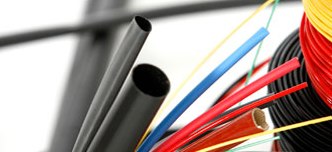
Electrical characteristics of dielectrics
Bulk resistance — the resistance of a dielectric when a direct current passes through it. For a flat dielectric it is equal to:
Rv = ρv (d / S), ohm
where ρv — the specific volume resistance of the dielectric, which is the resistance of a cube with an edge of 1 cm, when a direct current passes through two opposite sides of the dielectric, Ohm-cm, S is the cross-sectional area of the dielectric through which the current passes (area of the electrodes ), cm2, e — dielectric thickness (distance between electrodes), see
Dielectric surface resistance
Surface resistance — the resistance of a dielectric when a current passes through its surface. This resistance is:
Rs = ρs (l / S), Ohm
where ps — specific surface resistance of a dielectric, which is the resistance of a square (of any size) when a direct current passes from one side to its opposite, Ohm, l- length of the dielectric surface (in the direction of current flow), cm, C — the width of the dielectric surface (in the direction perpendicular to the current flow), see
The dielectric constant.
As you know, the capacity of a capacitor — a dielectric closed between two parallel and opposite metal plates (electrodes) is:
C = (ε S) / (4π l), cm,
where ε — the relative dielectric constant of the material, equal to the ratio of the capacity of a capacitor with a given dielectric to the capacity of a capacitor with the same geometric dimensions, but whose dielectric is air (or rather vacuum); C — area of the capacitor electrode, cm2, l — thickness of the dielectric closed between the electrodes, see
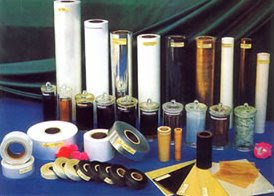
Dielectric loss angle
The power loss in a dielectric when an alternating current is applied to it is:
Pa = U NS Ia, W
where U is the applied voltage, Ia is the active component of the current passing through the dielectric, A.
As is known: Ia = AzR / tgφ = AzRNS tgδ, A, Azr = U2πfC
where Azp is the reactive component of the current passing through the dielectric, A, C is the capacitance of the capacitor, cm, f is the frequency of the current, Hz, φ — the angle at which the current vector passing through the dielectric is ahead of the applied voltage vector to this dielectric, degrees, δ — angle complementary to φ to 90 ° (dielectric loss angle, degrees).
In this way, the amount of power loss is determined:
Pa = U22πfCtgδ, W
Of great practical importance is the question of the dependence of tgδ on the magnitude of the applied voltage (ionization curve).
With homogeneous insulation, without delamination and cracking, tgδ is almost independent of the magnitude of the applied voltage; in the presence of delamination and cracking, with increasing applied voltage, tgδ increases sharply due to the ionization of voids contained in the insulation.
Periodic measurement of dielectric losses (tgδ) and its comparison with the results of previous measurements characterize the condition of the insulation, the degree and intensity of its aging.
Dielectric strength
In electrical installations, the dielectrics that form the insulation of the coil must withstand the action of the electric field. The intensity (voltage) of the tulle increases as the voltage creating this field increases, and when the field strength reaches a critical value, the dielectric loses its electrical insulating properties, the so-called dielectric breakdown.
The voltage at which the breakdown occurs is called the breakdown voltage, and the corresponding field strength is the dielectric strength.
The numerical value of the dielectric strength is equal to the ratio of the breakdown voltage to the thickness of the dielectric at the point of breakdown:
Epr = UNHC / l, kV / mm,
where Upr — breakdown voltage, kV, l — insulation thickness at the breakdown point, mm.
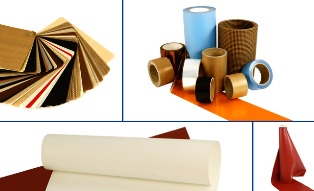
Electrical insulation materials
Physico-chemical characteristics of dielectrics
In addition to electrical ones, the following physico-chemical characteristics of dielectrics are distinguished.
Acid number — specifies the amount (mg) of potassium hydroxide (KOH) required to neutralize the free acids contained in the liquid dielectric and degrade its electrical insulating properties.
Viscosity — determines the degree of fluidity of the liquid dielectric, which determines the penetrating ability of varnishes when impregnating winding wires, as well as the convection of oil in transformers, etc.
They distinguish kinematic viscosity, measured by capillary viscometers (U-shaped glass tubes), and the so-called conditional viscosity, determined by the velocity of the fluid flow from a calibrated orifice in a special funnel. The unit of kinematic viscosity is Stokes (st).
Conditional viscosity measured in degrees Engler.
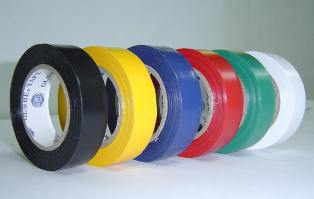
Thermal resistance — the ability of a material to perform its functions when exposed to an operating temperature for a time comparable to the estimated period of normal operation of electrical equipment.
Under the influence of heating, thermal aging of electrical insulation materials occurs, as a result of which the insulation ceases to meet the requirements imposed on it.
Heat resistance classes of electrical insulating materials (GOST 8865-70).The letter indicates the class of heat resistance, and the numbers in brackets - temperature, ° C
Y (90) Fibrous materials of cellulose, cotton and natural silk, not impregnated or dipped in liquid electrical insulating material A (105) Fibrous materials of cellulose, cotton or natural, viscose and synthetic silk, impregnated or dipped in liquid electrical insulating material D (120) Synthetic materials (films, fibers, resins, compounds) B (130) Mica, asbestos and fiberglass materials used with organic binders and impregnants F (155) Mica, asbestos and fiberglass materials combined with synthetic binders substances and impregnants H (180) Materials based on mica, asbestos and fiberglass in combination with silicon silicon binders and impregnating compounds C (over 180) Mica, ceramic materials, glass, quartz or combinations thereof without binders or with inorganic binders substances
Softening point at which solid dielectrics having an amorphous state in the cold state (resins, bitumen) begin to soften. The softening point is determined when the heated insulation is squeezed out of a ring or tube using a steel ball or mercury.
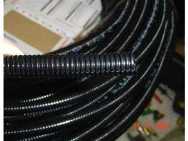
Drop point at which the first drop separates and falls from the beaker (with a 3 mm diameter opening at the bottom) in which the test material is heated.
Vapor flash point at which a mixture of insulating liquid vapor and air is ignited by the presented burner flame. The lower the flash point of the liquid, the greater its volatility.
Moisture resistance, chemical resistance, frost resistance and tropical resistance dielectrics -stability of electrical and physico-chemical characteristics of electrical insulating materials when exposed to moisture, acids or bases at low temperatures in the range from -45 ° to -60 ° C, as well as tropical climate, characterized by high and sharply changing air temperature during the day, its high humidity and pollution, presence of molds, insects and rodents.
Resistance to arc and corona dielectrics — resistance of electrical insulating materials to the effects of ozone and nitrogen released during silent discharge — corona, as well as resistance to the action of electric sparks and stable arc.
Thermoplastic and thermosetting properties of dielectrics
Thermoplastic electrical insulating materials are those which are initially solid when cold, soften when heated and dissolve in suitable solvents. After cooling, these materials solidify again. With repeated heating, their ability to soften and dissolve in solvents remains. Thus, heating such materials does not cause any changes in their molecular structure.
In contrast to them, the so-called thermoset materials after heat treatment in an appropriate mode, they harden (bake). Upon repeated heating, they do not soften and do not dissolve in solvents, which indicates irreversible changes in their molecular structure that occurred during heating.
Mechanical characteristics of insulating materials are: maximum tensile strength, compression, static and dynamic bending, as well as stiffness.
